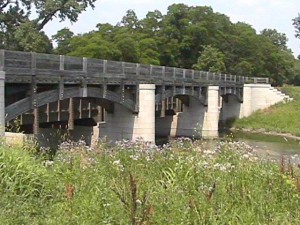
In August of 1984, President Reagan signed the legislation to create a new kind of National Park Service designation – the Illinois and Michigan Canal National Heritage Corridor. The heritage corridor or area idea was conceived as a way to cross the culture –nature divide and leap political boundaries with the goal of blending public-private resource conservation, interpretation, and community revitalization. Heritage areas tell stories that are too big, too gritty, too alive, and just plain too expensive to be confined to the boundaries of traditional national park unit. And heritage areas harness grassroots energy to power all this good work. Over and over the National Park Service (NPS) has touted the NHA approach to partnership and community engagement. Reports such as the now ten year old Charting a Future for the National Heritage Areas, and the recent Call to Action call out the program as the future of the park service. Over and over evaluations of the heritage area program have documented effective management, and the cost efficient resource conservation and recreational development.
This year is the thirtieth anniversary of the National Heritage Area (NHA) program, but don’t celebrate too soon. NHAs across the nation are facing a perilous time. The now 49 National Heritage Areas stretching from Atlantic coast to the state of Alaska are struggling to survive. They have been hammered by shrinking federal budgets, questions about the role of government, and even their right to exist.
The Living Landscape Observer (LLO) follows the large landscape movement and in our opinion NHAs are some of the most innovative regional initiatives out there. Yet with the future of the program at risk, it is time to try and tackle some of the difficult political and programmatic questions. For example, with so many National Heritage Areas across the country and Congress proposing to designate more, why is the sustainability of this program at risk? With such intense interest in landscape scale work and collaborative approaches to conservation and community engagement, what can be learned from NHAs? Who are the partners that have similar mission and can help support the program? How can the heritage areas be repositioned to further the National Park Service’s stewardship role in the 21st century?
With all these glowing reports and the NPS Centennial of the National Park Service right around the corner in 2016, this is the right time to have a critical dialogue on the past, present, and future of the NHA idea. So as our contribution to the thirtieth anniversary, NHA@30, we plan to:
- Post articles in the LLO newsletter every month starting this January through December 2014 on the foundations of the program and the issues facing heritage areas today
- Produce a short history of the NHA program – available on the LLO web site in June 2014.
- Provide a current conditions assessment on the program – available on the LLO web site July 2014.
- Conduct surveys, hold meetings, and have discussions on the future of NHAs with diverse partners and interested parties.
- Publish our insights and recommendations on NHAs in December 2014.
- Seek to engage young scholars in the field of landscape scale resource conservation by asking for their essays and contributions.
Help us tell the Whole Story: We are seeking opinion pieces, comments, and stories on NHAs…so join us in the discussion about the program’s future. Contact us with your ideas!
bbarrett@livinglandscapeobserver.net or emahoney@livinglandcapeobserver.net


